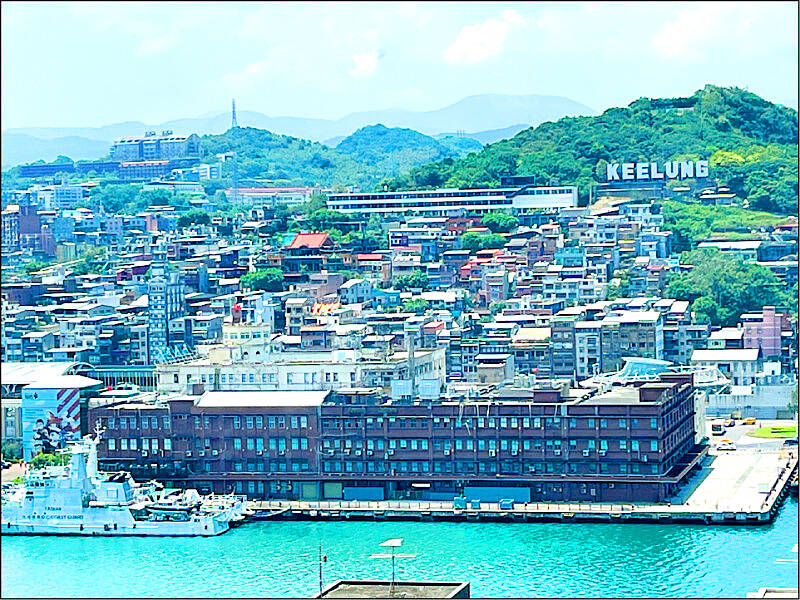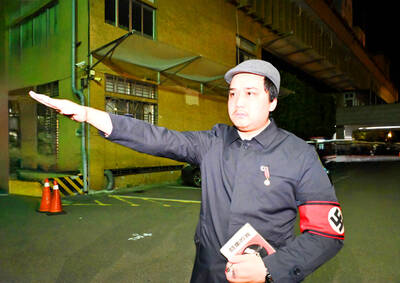Keelung last year became the nation’s “loneliest” city, with one-person households making up more than 41 percent of its households, the latest data from the Ministry of the Interior showed.
As of the end of last year, there were more than 3.57 million one-person households nationwide, accounting for 37.67 percent of the total households, the data showed.
The nation’s population spiked to a record 23.6 million in 2019 before consecutively declining year by year to 23.4 million last year.

Photo: Taipei Times
However, similar to Japan, the number of households climbed to about 9.49 million from about 8.83 million over the same period, despite the population shrinking, mainly because nuclear families were decreasing.
The number of one-person or two-people households has been rising over the past decade, meaning that households of people living alone or childless couples were increasing.
The number of one-person or two-people households increased to more than 5.59 million last year, or 59 percent of households, while households of four people or more declined over the same period, the data showed.
The number of households of five people or more — which were mostly three-generation families — dropped to about 985,000 last year, or 10.3 percent, dipping to fewer than 1 million for the first time.
Keelung was the “loneliest” among all administrative regions with its one-person households reaching 41.61 percent, while its households of six people or more accounted for 2.42 percent, the lowest in Taiwan.
It was followed by Taitung County and Taipei respectively, of which one-person households surpassed 40 percent each, the data showed.
The least lonely administrative region was Changhua County, of which one-person households made up 30.61 percent, while households of six people or more reached 9.66 percent, third behind Kinmen and Matsu (Lienchiang) counties.
As of June last year, the number of households of people aged 65 or older living alone was more than 1.03 million, up by about 300,000 people from 727,000 in August 2018.
Meanwhile, among the 19 administrative areas in Taiwan proper, only Taoyuan and Hsinchu County had positive natural population growth.
Yunlin County had the highest birthrate and death rate.
Of the six major cities, Taoyuan residents were the most willing to have children, while New Taipei City residents were the least willing.
The Taipei City Government was the most generous nationwide in terms of birth subsidies with NT$40,000 for the first child, NT$45,000 for the second and NT$50,000 for more.
Thanks to the boosted birth subsidies, the natural population decline in Taipei was 2,612 people last year, down from 4,330 people in 2023 and 6,255 people in 2022, the data showed.
The Yunlin County Government’s birth subsidy of NT$30,000 for each of the first three newborns remained unchanged, while the subsidy for the fourth newborn or more was raised to NT$100,000. The county had the highest birthrate last year.
New Taipei City, which had the lowest birthrate among the six major cities over the past few years, earlier this year increased its subsidies to NT$30,000 for the first newborn, NT$40,000 for the second and NT$50,000 for more.
Although Taipei provides the highest birth subsidies and has diminishing natural population decline, last year its social population decline gained speed, meaning that soaring house prices kept driving people away from the city.

SECURITY: As China is ‘reshaping’ Hong Kong’s population, Taiwan must raise the eligibility threshold for applications from Hong Kongers, Chiu Chui-cheng said When Hong Kong and Macau citizens apply for residency in Taiwan, it would be under a new category that includes a “national security observation period,” Mainland Affairs Council (MAC) Minister Chiu Chui-cheng (邱垂正) said yesterday. President William Lai (賴清德) on March 13 announced 17 strategies to counter China’s aggression toward Taiwan, including incorporating national security considerations into the review process for residency applications from Hong Kong and Macau citizens. The situation in Hong Kong is constantly changing, Chiu said to media yesterday on the sidelines of the Taipei Technology Run hosted by the Taipei Neihu Technology Park Development Association. With

‘FORM OF PROTEST’: The German Institute Taipei said it was ‘shocked’ to see Nazi symbolism used in connection with political aims as it condemned the incident Sung Chien-liang (宋建樑), who led efforts to recall Democratic Progressive Party (DPP) Legislator Lee Kun-cheng (李坤城), was released on bail of NT$80,000 yesterday amid an outcry over a Nazi armband he wore to questioning the night before. Sung arrived at the New Taipei City District Prosecutors’ Office for questioning in a recall petition forgery case on Tuesday night wearing a red armband bearing a swastika, carrying a copy of Adolf Hitler’s Mein Kampf and giving a Nazi salute. Sung left the building at 1:15am without the armband and apparently covering the book with a coat. This is a serious international scandal and Chinese

A US Marine Corps regiment equipped with Naval Strike Missiles (NSM) is set to participate in the upcoming Balikatan 25 exercise in the Luzon Strait, marking the system’s first-ever deployment in the Philippines. US and Philippine officials have separately confirmed that the Navy Marine Expeditionary Ship Interdiction System (NMESIS) — the mobile launch platform for the Naval Strike Missile — would take part in the joint exercise. The missiles are being deployed to “a strategic first island chain chokepoint” in the waters between Taiwan proper and the Philippines, US-based Naval News reported. “The Luzon Strait and Bashi Channel represent a critical access

COUNTERINTELLIGENCE TRAINING: The ministry said 87.5 percent of the apprehended Chinese agents were reported by service members they tried to lure into becoming spies Taiwanese organized crime, illegal money lenders, temples and civic groups are complicit in Beijing’s infiltration of the armed forces, the Ministry of National Defense (MND) said in a report yesterday. Retired service members who had been turned to Beijing’s cause mainly relied on those channels to infiltrate the Taiwanese military, according to the report to be submitted to lawmakers ahead of tomorrow’s hearing on Chinese espionage in the military. Chinese intelligence typically used blackmail, Internet-based communications, bribery or debts to loan sharks to leverage active service personnel to do its bidding, it said. China’s main goals are to collect intelligence, and develop a